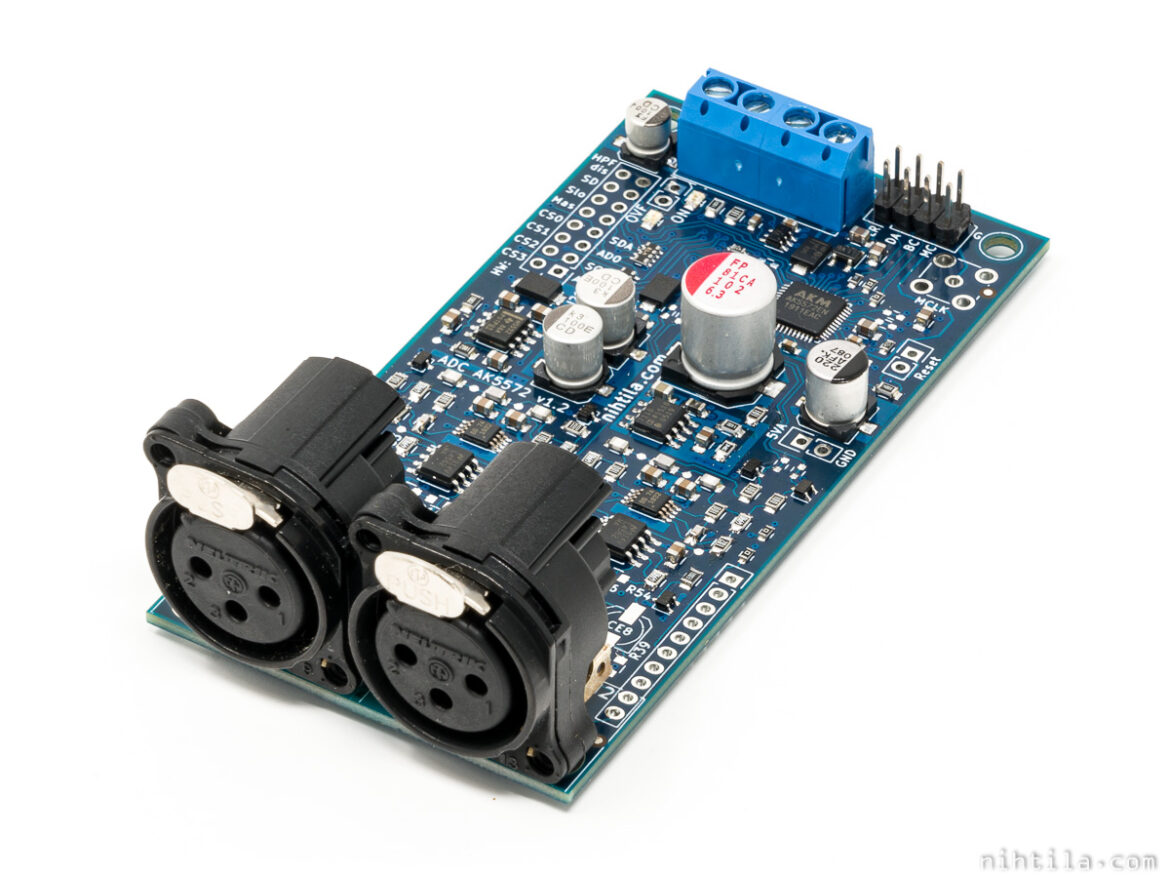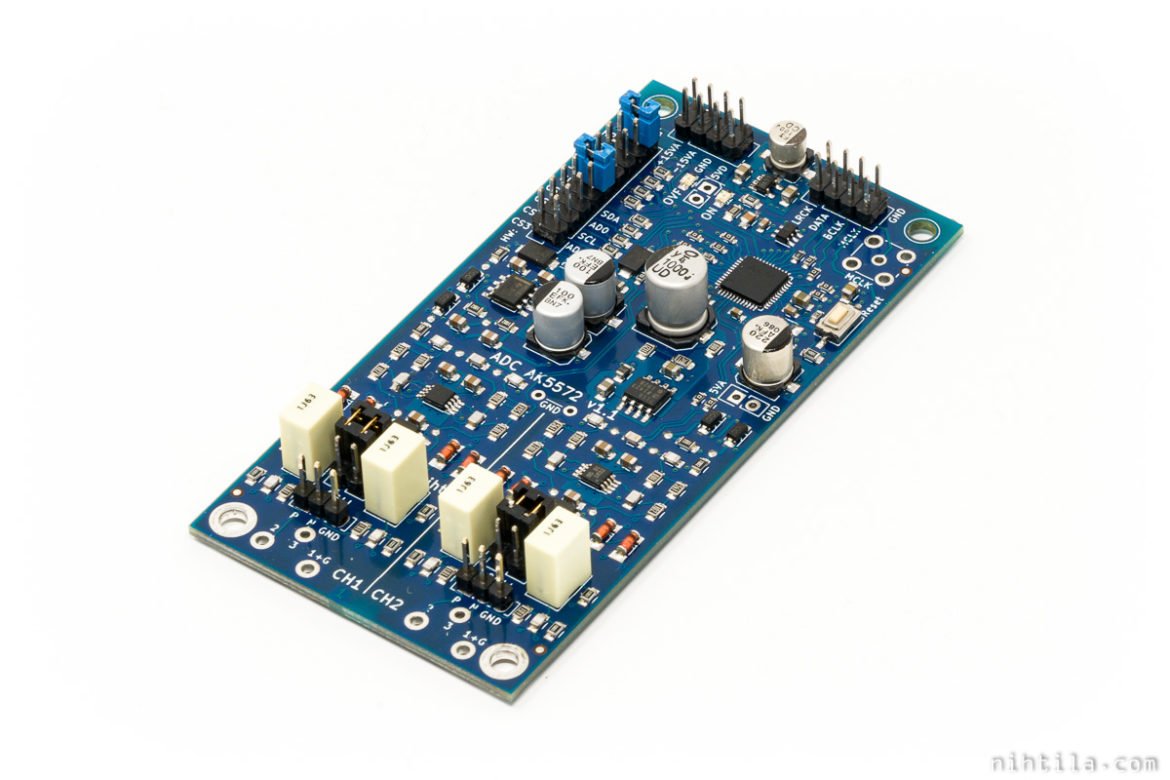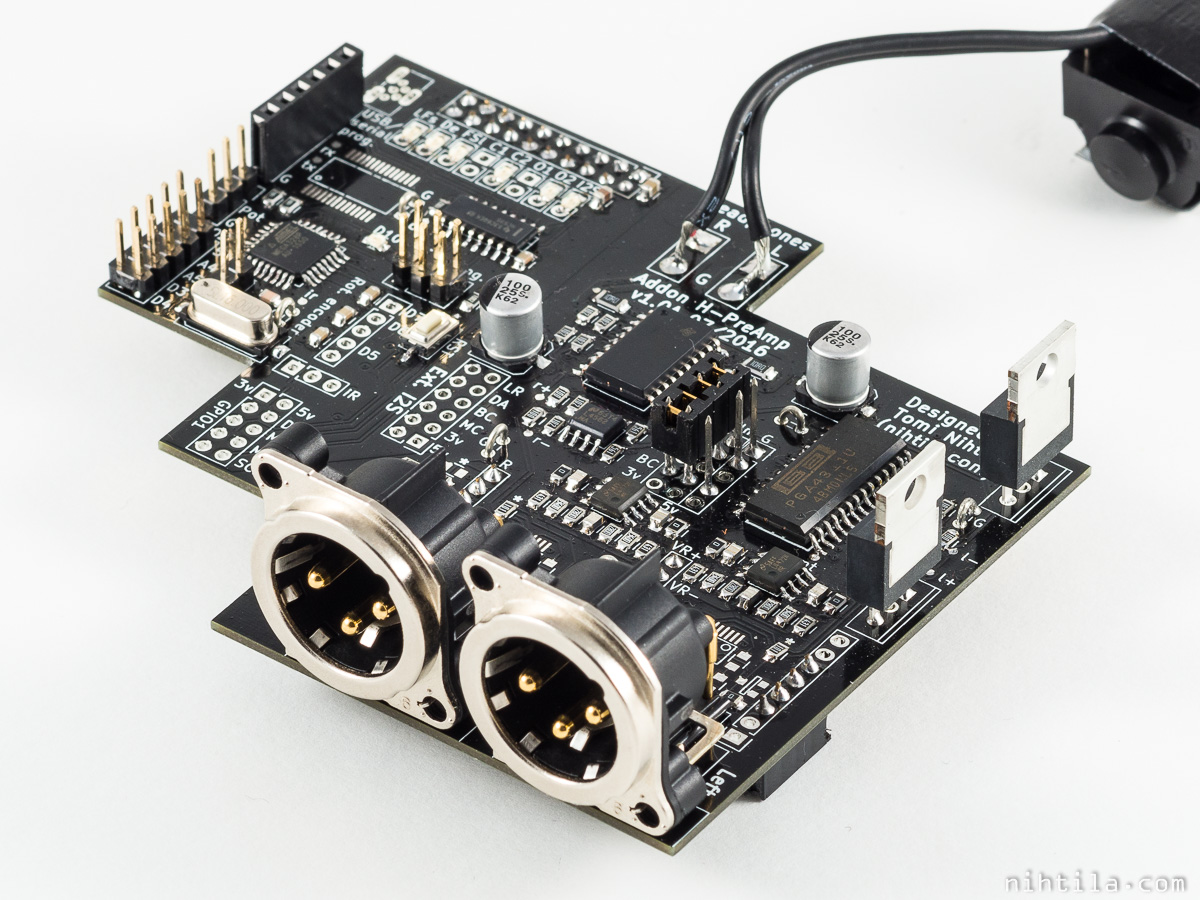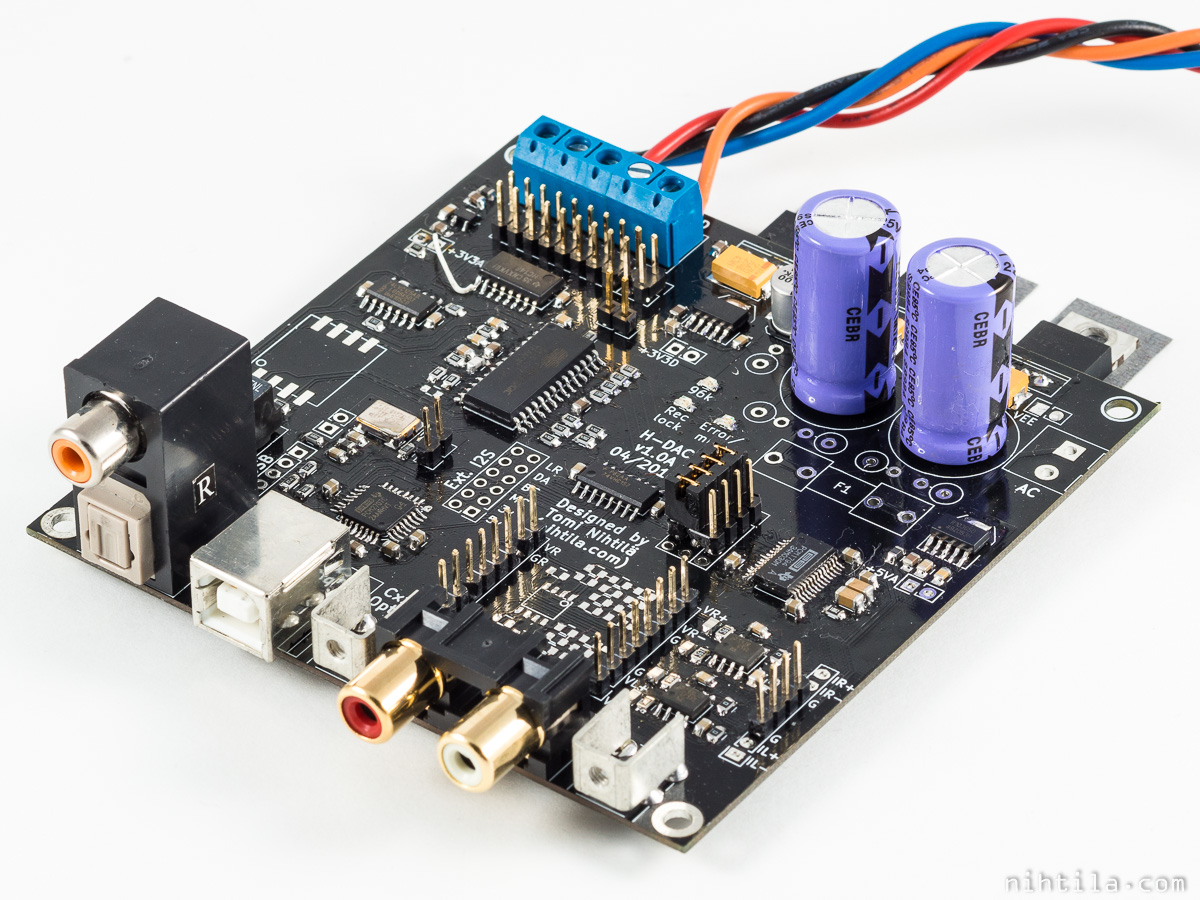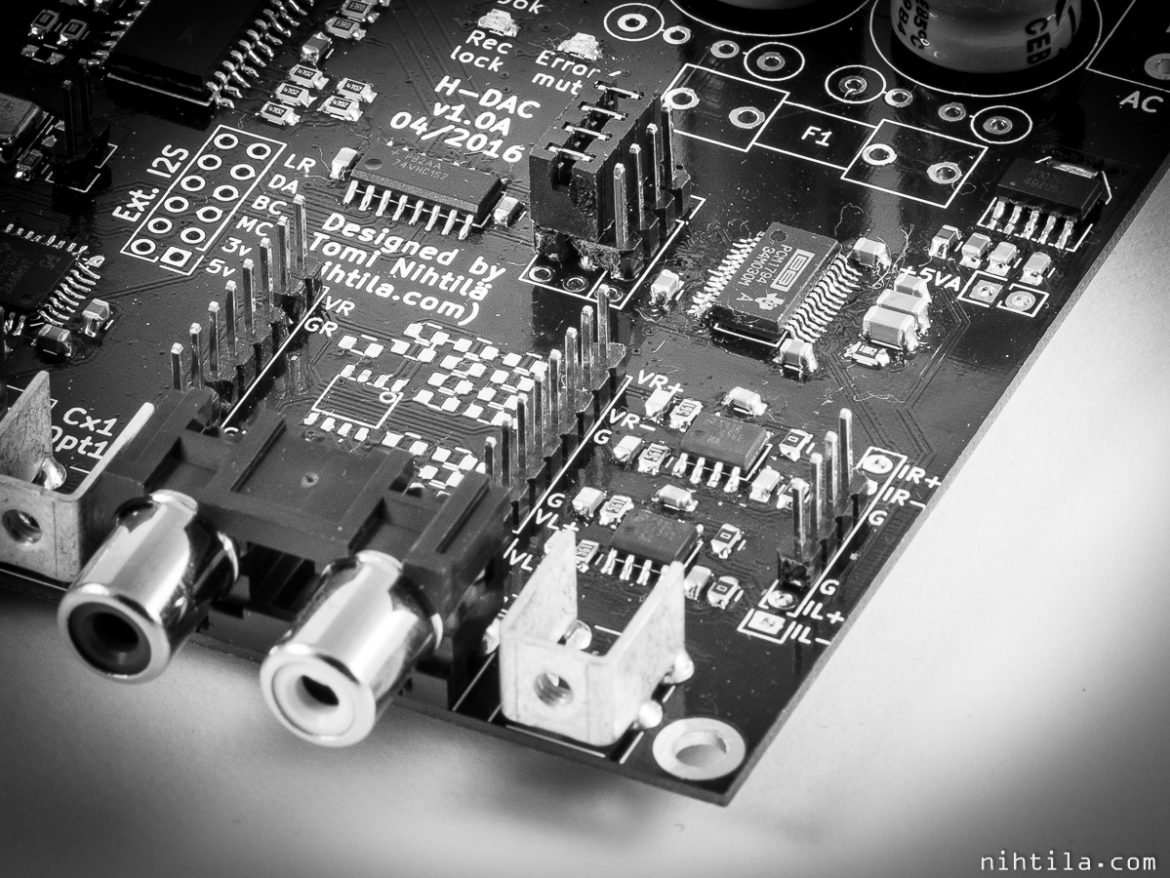ADC AK5572 boards are available again, in slightly modified version 1.2. Despite a rather long list of changes there are no differences in performance and no major changes in functionality.
Note that there is also v1.3 now. It is the same as v1.2 except the PCB is green.
